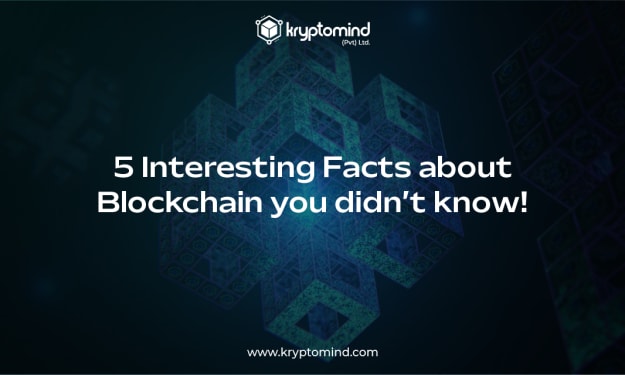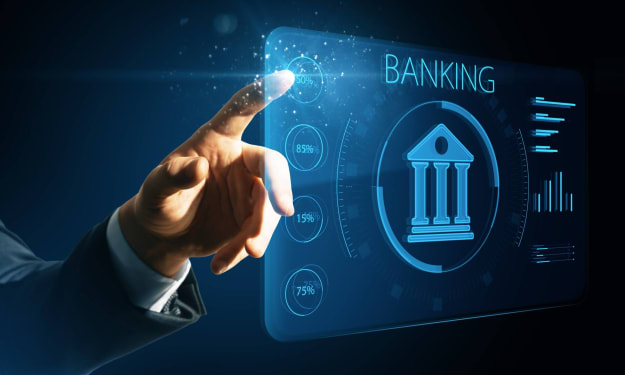Let’s Explore The ERC-1155 Token Standard
All the specific details about the role of the ERC-1155 Token standard in NFTs and its involvement in the development of NFTs in Blockchain Technology.

ERC1155, “Ethereum Request for Comments 1155,” is a token standard mostly utilized for NFTs (non-fungible tokens). It is advantageous to have a token standard like the ERC1155 to control these tokens since NFTs are becoming increasingly popular, and more artists want to produce NFTs. Additionally, understanding the ERC-1155 token standard, one of the top standards on Ethereum, is a crucial step for anybody desiring to begin in blockchain programming and wishing to construct NFTs. As a result, keep reading to learn more about the ERC-1155 token standard, what it is, and how it differs from other token standards. As a result, you’ll be prepared to begin using the ERC-1155 token standard to create ERC1155 NFTs.
ERC-721 was the first non-fungible token standard under Ethereum that NFT enthusiasts adopted. The Ethereum community did, however, discover ways to enhance and expand the capabilities of ERC-721. The newest NFT standard, ERC1155, has emerged and offers intriguing advancements. In this article, you’ll learn why the ERC-1155 standard is favored by developers nowadays.
The ERC1155 token standard is found to have borrowed from earlier fungible and non-fungible token standards like ERC-20 and ERC-721. The smart contract’s capacity to simultaneously represent several tokens is only one of its many new advantages. Additionally, compared to earlier standards, it is more efficient due to several batch operations. The improvements to ERC1155 make transactions simpler to manage, which Solidity developers and NFT producers will welcome. Additionally, they reduce transaction costs by lowering Ethereum gas prices. Furthermore, ERC1155 provides greater versatility by combining fungible, non-fungible, and semi-fungible token features.
What is ERC1155?
There are more uses for ERC1155 than NFT tokens. It prepares the ground for the administration and exchange of many tokens. Single deployed contracts using ERC1155 may contain a variety of non-fungible, fungible, and semi-fungible token combinations.
This ERC1155 token standard was created by the Enjin team and was inspired by other token standards like ERC721 and ERC20 tokens. It made its enhancements as well. Previously, for each fungible or non-fungible token, you had to deploy a new contract under ERC-20 or ERC-721. As a result, duplicate bytes of code are scattered across Ethereum’s network. The earlier standards also restricted some features by breaking each contract into separate addresses.
Obviously, the community needed to develop a new standard for the NFT and a larger token ecosystem for them to develop and spread into other applications. The number of transactions and the inefficiency of the contracts would need to be reduced if gaming platforms and other token-based dApps (decentralized apps) wished to use NFTs. So, ERC1155 was created.
With ERC1155, it can now send many token kinds at once and reduce transaction fees. On top of the ERC1155 standard, it is also feasible to build exchanges using atomic swaps and escrows of different tokens. As a result of ERC1155, the system is no longer required to approve token contracts one at a time.
ERC-1155 vs. ERC-721
The ERC-721 and ERC-1155 standards are the most often used for NFTs.
The ERC-721 token standard is the most recognizable NFT token standard because it was the first to be widely adopted. Additionally, this standard enables apps to leverage the NFT-specific Ethereum API from Moralis.
ERC-721 specifies the bare minimal interface that a smart contract must implement. It is possible to own, trade, and manage tokens using this minimal interface. A standard for the token’s associated information is not required. Additionally, it does not prohibit features that go above or beyond the minimum required.
Dieter Shirley, the CTO of Dapper Labs, first created ERC-721 as a draught EIP (Ethereum improvement proposal), which eventually inspired the game CryptoKitties.
Keeping in mind that they only include links or URIs to the artwork, photos, or files, as well as their information, is a crucial aspect of NFT’s smart contracts. Such tokens point to off-chain sources for these data files and information, removing the need for the blockchain to house this data.
Using ERC1155 to Create Semi-Fungible Tokens
What exactly are semi-fungible tokens, though? These new token types combine various characteristics of the token standards that came before them. Imagine that you’re getting the best of both worlds. Consider this helpful analogy: You can design a shop voucher, which is a fungible token that retains value until you use it. After being redeemed, the coupon has no further cash value and cannot be traded like any other fungible token. As a result, the redeemed voucher now has different features and is distinct in terms of the item saved, the user, the price, etc. As a result, it stops being fungible. A semi-fungible token standard like ERC1155 can, however, embody both characteristics.
The Enjin blog claims that ERC1155 is a revolutionary method of defining tokens. The least amount of information required to differentiate each item from the others allows storing several objects in a single contract. The contract state, according to Enjin, “contains configuration data per token ID and all the behavior guiding the collection,” he adds.
As a result, this new token standard enables the creation of NFTs like CryptoPunks and CryptoKitties and utility tokens like BNB, for instance. Transactions are safer and more efficient thanks to their enhancements. ERC1155 reduces gas costs by grouping transactions together, in contrast to ERC-721. Additionally, the creation of effective NFTs and fungible tokens simultaneously demonstrates an improvement above ERC-20 and ERC-721.
ERC1155 Contracts
Multiple token kinds can now be transferred thanks to ERC1155 contracts simultaneously. On top of the ERC1155 standard, you may implement various functionality, including atomic swaps and escrows (helpful in trading) of different tokens. By doing this, you do away with the requirement that ERC-721 token contracts be individually authorized. Additionally, as was already noted, many NFT and fungible token types can be combined into a single ERC1155 contract.
Atomic Swap of Multiple Tokens
ERC1155 contracts can help you save money on Ethereum gas costs since, in this case, the full batch gets approved and transacts in just two easy steps. You may also transfer several products to numerous receivers using ERC1155 contracts.
Transferring Many Tokens at Once to Various Accounts
Moving various items to several users simply requires one contract and one transaction. ERC1155 eliminates redundancy and is lightweight and practical.
ERC1155 Contract Sample
// contracts/GameItems.sol
// SPDX-License-Identifier: MIT
pragma solidity ^0.6.0;
import “@openzeppelin/contracts/token/ERC1155/ERC1155.sol”;
contract GameItems is ERC1155 {
uint256 public constant COPPER = 0;
uint256 public constant CRYSTAL = 1;
uint256 public constant ELDER_SWORD = 2;
uint256 public constant KNIFE = 3;
uint256 public constant WAND = 4;
constructor() public ERC1155(“https://game.example/api/item/{id}.json”) {
_mint(msg.sender, COPPER, 10**18, “”);
_mint(msg.sender, CRYSTAL, 10**27, “”);
_mint(msg.sender, ELDER_SWORD, 1, “”);
_mint(msg.sender, KNIFE, 10**9, “”);
_mint(msg.sender, WAND, 10**9, “”);
}
}
An ERC1155 contract has now been initialized. The gaming objects included in this agreement are both fungible and non-fungible. The “Elder Sword” is not fungible in this situation, but copper is.
You can also see that each item listed under “GameItems” has a corresponding number. Simply put, this means that any number, including “copper” and “crystal,” is really just an alias for “0,” “1,” and so on. These names are internally interpreted as “0,” “1,” “2,” “3,” and “4”.
There are a number of “mint calls” in the function Object() { [native code] } portion of the ERC1155 contract. New token kinds are created via the mint calls. Copper is coined in this game’s currency in the quantity of “1018,” whereas crystal is minted in the quantity of “1027.” The elder sword is an NFT since it is only available in a single quantity, or “1”. Because there is just one of it accessible, it is special and uncommon despite the fact that the knife and wand mint in large numbers. They might also be non-fiat tokens (NFTs) since they stand for distinct objects that are not coins. Additionally, you don’t need to start a new contract; you can simply keep adding items to the existing one.
ERC1155 – The Gold Standard
Versions of smart contracts are used in significant NFT markets. Users can generate new goods using ERC1155 without deploying new contracts on various marketplaces. ERC1155 so offers a benefit while developing dApps on Ethereum. The new superior standard for NFT platforms developed today also makes more sense in the NFT marketplace development. ERC1155 may advance your blockchain development career alongside Moralis, which provides new, potent techniques to enhance your NFT dApps and platforms.
Given these benefits, there are few reasons to return to the earlier, cumbersome standard. However, it is still a choice for straightforward projects and a helpful teaching tool for any inexperienced blockchain developer or NFT coder.
Summary
ERC1155 is currently regarded as the “gold standard” for NFT platform development due to all the distinctive benefits it offers. It enables the combination of several token kinds and the ability to handle many users or receivers in a single deployed contract and transaction. With numerous unique characteristics, such as developing semi-fungible tokens, it is an advance above previous NFT standards.
ERC1155 may assist you in developing the upcoming wave of popular NFT games, markets, and platforms when combined with Moralis’ robust Web3 development tools, which let you quickly set up a blockchain node and shift backend work to its infrastructure, and construct dApps.





Comments
There are no comments for this story
Be the first to respond and start the conversation.